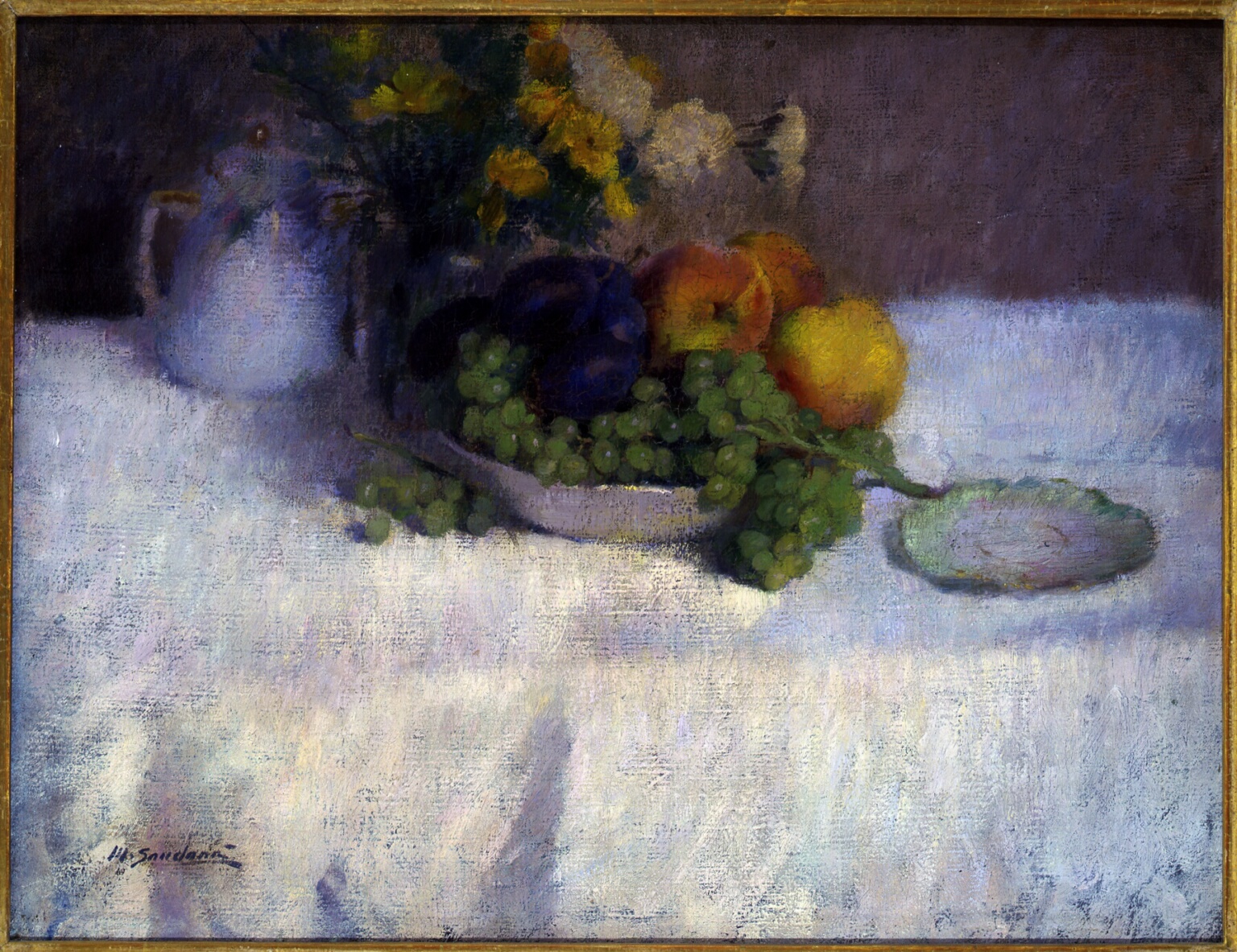|

Oil on canvas, 20 ¼ x 26 ¼ in.
Trained in Europe and at the National Academy of Design in New York,
Sandona settled in San Francisco in 1901 where he earned his living
as a portrait artist. (He also painted portraits in Hawaii
--between 1903 and 1920 -- and in Santa Barbara.) His style
changed with the times and varies from the bravura brushwork
reminiscent of John Singer Sargent to Impressionism, Deco (in the
1930s), and bald realism (1950s). His most aesthetically appealing
pieces, however, are his own version of Impressionism, which he
produced at an unyet determined period (but most likely before
1920). Most of these are portraits but he also made a few figure
studies as well as still lifes, such as Untitled. In these
works edges are soft and undefined and objects are rendered with
broken brushwork. In this still life the focal point is high on the
picture plane above an extensive foreground (a standard
Impressionist format). The objects are arranged on a tabletop.
This is a common still life composition type, some others being an
arrangement of objects on a flat vertical space such as a letter
rack or wall, or on a book shelf, or on a chair seat, etc.) and
probably depicts California grown peaches, grapes and plums.
Provenance: Ronald A. Belkin, Inc., Long Beach, February 2, 1985,
who obtained it from Tim Mason who obtained it from descendants of the
artist; exhibitions
and publications:
exhibited
Bohemian Club, S.F.;
exhibited, 75 Works 75 Years Collecting the Art of California,
Laguna Art Museum, Laguna Beach, Ca. April 2 – July 11, 1993, and
reproduced in the catalogue in color p. 24; reproduced in color Nancy
Moure, California Art: 450 Years of Painting & Other Media, Los
Angeles: Dustin Publications, 1998, p. 170; Laguna Art Museum.
|
